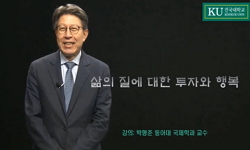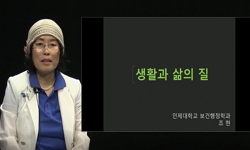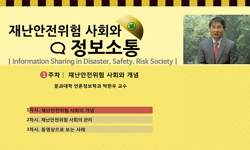정보통신기술(Information & Communication Technology)의 발전은 삶의 질의 개선을 요구하는 인간의 욕구를 충족시키는데 기여하고 있다. 인간의 삶의 질은 정량적 개선을 넘어서 정성적 요소를 적극...
http://chineseinput.net/에서 pinyin(병음)방식으로 중국어를 변환할 수 있습니다.
변환된 중국어를 복사하여 사용하시면 됩니다.
- 中文 을 입력하시려면 zhongwen을 입력하시고 space를누르시면됩니다.
- 北京 을 입력하시려면 beijing을 입력하시고 space를 누르시면 됩니다.

정성적 위험의 모호성을 반영한 최적의 스마트 시티 결정 = Optimal Smart City Decision Reflecting the Ambiguity of Qualitative Risk
한글로보기https://www.riss.kr/link?id=A105544214
- 저자
- 발행기관
- 학술지명
- 권호사항
-
발행연도
2018
-
작성언어
-
-
주제어
스마트 시티 ; 삶의 질 ; 그레이 이론 ; 위험 ; 모호성 ; smart city ; quality of life ; Grey theory risk ; ambiguity
-
KDC
300
-
등재정보
KCI등재
-
자료형태
학술저널
-
수록면
213-220(8쪽)
-
KCI 피인용횟수
0
- DOI식별코드
- 제공처
-
0
상세조회 -
0
다운로드
부가정보
국문 초록 (Abstract)
정보통신기술(Information & Communication Technology)의 발전은 삶의 질의 개선을 요구하는 인간의 욕구를 충족시키는데 기여하고 있다. 인간의 삶의 질은 정량적 개선을 넘어서 정성적 요소를 적극적으로 고려함으로서 실현되고 있으며, 이러한 과정에서 정보기술 및 과학의 발전은 중요한 역할을 수행하고 있다. 정부는 smarter management를 통해서 도시에서 발생하는 교통, 통신 보안, 건강, 환경 등의 문제를 해결하여 인간의 삶의 질 개선에 노력하고 있으며, 이러한 도시를 스마트 시티(smart city)라고 한다. 스마트 시티는 위치, 조건, 상황, 인프라 등과 같은 환경에 의해 발생하는 다양한 위험들에 노출되고, 이러한 위험들로 인해 삶의 질에 대한 사람들의 만족 수준이 다르게 나타난다. 그러므로 본 연구는 스마트 시티들이 가지고 있는 다양한 위험 요소들을 고려하여 최적의 스마트 시티를 선정하는 방법을 제시하고자 한다. 스마트 시티들에서 발생하는 위험은 정량적인 특성뿐만 아니라 정성적인 특성을 가지고 있다. 정성적 특성의 위험들이 가지는 모호성을 객관적으로 평가하는 것은 매우 어려운 일이기 때문에 본 연구는 위험의 모호성을 고려하여 최적의 스마트 시티를 선정한다. 본 논문은 2가지 목표를 제시한다. 첫째는 스마트 시티들에서 발생하는 위험들을 체계적으로 제시하는 것이며, 둘째는 위험의 모호성을 객관화시키기 위해서 Grey theory를 적용하여 최적의 스마트 시티를 찾아내는 것이다.
다국어 초록 (Multilingual Abstract)
The development of Information & Communication Technology is contributing to fulfill human desire to improve the quality of life. The quality of human life is realized by actively considering qualitative factors beyond quantitative improvement, and in...
The development of Information & Communication Technology is contributing to fulfill human desire to improve the quality of life. The quality of human life is realized by actively considering qualitative factors beyond quantitative improvement, and in this process the development of information technology and science plays an important role. The government is trying to improve the quality of human life by solving problems of traffic, communication security, health, and environment in the city through smarter management. Smart city is exposed to a variety of risks arising from environments such as location, conditions, circumstances, and infrastructure, and these risks result in different levels of people s satisfaction with quality of life. Therefore, this study suggests a method of selecting the optimal smart city considering various risk factors of smart cities. The risks arising from smart cities have qualitative as well as quantitative characteristics. Since it is very difficult to objectively evaluate the ambiguity of the qualitative risk, this study selects the optimal smart city considering the ambiguity of risk. This paper presents two goals. The first is to systematically present the risks that occur in smart cities, and the second is to find the optimal smart city by applying the Grey theory to objectify the ambiguity of risk
목차 (Table of Contents)
- 요약
- Abstract
- 1. 서론
- 2. 위험의 모호성 처리
- 3. 스마트 시티의 위험 요인
- 요약
- Abstract
- 1. 서론
- 2. 위험의 모호성 처리
- 3. 스마트 시티의 위험 요인
- 4. 결론 및 추후 연구과제
- References
참고문헌 (Reference)
1 V. Baskaran, 135 (135): 647-658, 2012
2 J. L. Deng, 1 (1): 1-24, 1989
3 M. Angelidou, 41 : S3-S11, 2014
4 G. D. Li, 46 : 573-581, 2007
5 K. J. Park, 110 : 23-32, 2018
6 K. J. Park, 76 (76): 18083-18097, 2017
7 "http://www.rmmagazine.com"
8 "http://www.dhs.gov/office-cyber-infrastructure-anal"
9 J. L. Deng, "The Fundamental Methods of Grey System" Science and Technology of Central China University Press 2005
10 J. L. Deng, "Grey System Theory" Huazhong University of Science and Technology Press 2002
1 V. Baskaran, 135 (135): 647-658, 2012
2 J. L. Deng, 1 (1): 1-24, 1989
3 M. Angelidou, 41 : S3-S11, 2014
4 G. D. Li, 46 : 573-581, 2007
5 K. J. Park, 110 : 23-32, 2018
6 K. J. Park, 76 (76): 18083-18097, 2017
7 "http://www.rmmagazine.com"
8 "http://www.dhs.gov/office-cyber-infrastructure-anal"
9 J. L. Deng, "The Fundamental Methods of Grey System" Science and Technology of Central China University Press 2005
10 J. L. Deng, "Grey System Theory" Huazhong University of Science and Technology Press 2002
동일학술지(권/호) 다른 논문
-
사마천(司馬遷)의 「사기」(史記)를 활용한 의사소통 교육방안
- 인문사회과학기술융합학회
- 김현주(Hyun-Ju Kim)
- 2018
- KCI등재
-
임부의 사회적지지, 배우자폭력과 건강관련 삶의 질의 관계에서 산전우울의 매개효과
- 인문사회과학기술융합학회
- 이성희(Sung Hee Lee)
- 2018
- KCI등재
-
- 인문사회과학기술융합학회
- 위지희(We Ji-hee)
- 2018
- KCI등재
-
- 인문사회과학기술융합학회
- 박세환(Se-Hwan Park)
- 2018
- KCI등재
분석정보
인용정보 인용지수 설명보기
학술지 이력
| 연월일 | 이력구분 | 이력상세 | 등재구분 |
|---|---|---|---|
| 2020 | 평가예정 | 신규평가 신청대상 (신규평가) | |
| 2019-12-01 | 평가 | 등재 탈락 (기타) | |
| 2019-01-01 | 평가 | 등재학술지 유지 (계속평가) |  |
| 2016-01-01 | 평가 | 등재학술지 선정 (계속평가) |  |
| 2014-01-01 | 평가 | 등재후보학술지 선정 (신규평가) |  |
학술지 인용정보
| 기준연도 | WOS-KCI 통합IF(2년) | KCIF(2년) | KCIF(3년) |
|---|---|---|---|
| 2016 | 0.33 | 0.33 | 0.32 |
| KCIF(4년) | KCIF(5년) | 중심성지수(3년) | 즉시성지수 |
| 0.33 | 0.32 | 0.407 | 0.14 |





 KCI
KCI 스콜라
스콜라






